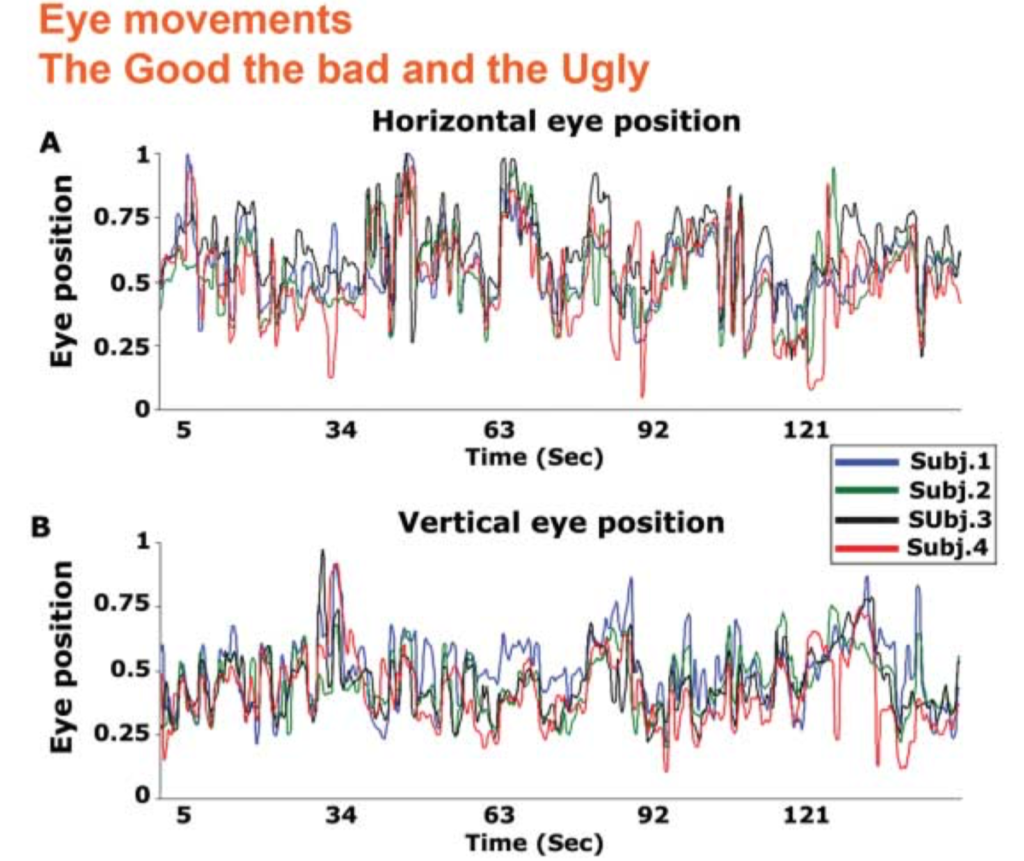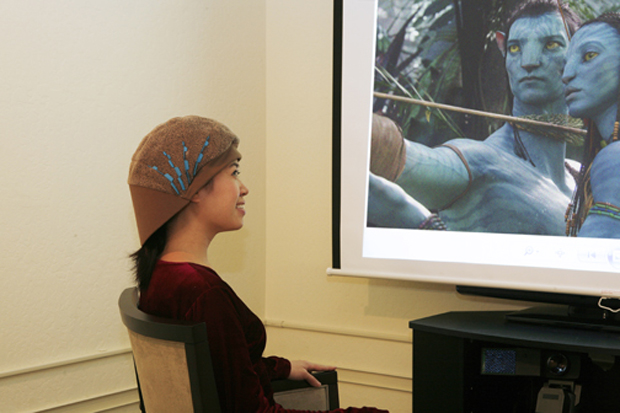Lately I’ve been watching a lot of movies and TV shows, either by myself, with my family or with my friends (through Facetime or Netflix Party). This made me wonder how movies affect our brains. I would consider cinema the most advanced art form: it is visual as well as auditory, it takes years and many people to make, yet it still tells a story, just as any other art form does. So its impact on our brains must be crazy, right? This question brought me to neurocinematics: a new and developing field, yet so incredibly interesting. In this blog, I want to share all the crazy things cinema does to our brains.

Imagine sitting in a movie theater. Maybe you’re by yourself, or with your best friend, your partner, your family. Beyond that, you’re in a room full of strangers. However, you all have one thing in common, besides just sitting in that movie theater together. You’re all probably blinking at around the same time, have similar eye movement and incredibly similar brain activity (Miller, 2017).

So what does this mean? Would I have the same brain activity as the stranger next to me every single time we watch a movie? Well, no. Some movies use more cinematic techniques, like strategic cuts and camera angles, to make the audience focus on a single point. These movies have a tighter grip on their audience. This means that this particular audience will have very similar brain activity and eye movements (Hasson, 2008). However, some other movies, whether intentionally of unintentionally, hold much less of a grip on the audience. During these movies, an audience’s brain activity will differ more from each individual person to another (Hasson, 2008).
So lets apply this to various movies. A movie with an intense bank robbery scene will elicit almost 70% correlation in brain activity among the audience (Miller, 2017). Everyone is extremely focused on the robbery scene, their minds and eyes are not wandering. However, a clip of reality, such as a crowd of people at a concert in New York City only elicits 5% synchronization in brain activity (Miller, 2017). There are no special cuts or angle to make a central point of focus for the audience. I could be watching the people in the front row of the concert, and you could be looking at the people waving in the back.

Middle Right: Improv show “Curb Your Enthusiasm”
Right: clip of reality
This would explain why people don’t have similar brain activity in everyday life, even if they are experiencing the exact same things. For example, lets say you and I are sitting in a classroom. However, you are choosing to pay attention to the class and I is not. Our brain activity would differ. Additionally, even if both of us were paying attention to the lecture, we might be focusing on different things that are being said and making different connections. A movie has the technology to control what objects or people we focus on and what connections we make. Pretty crazy, right?
In case you’re wondering which brain regions are activated during cinema, we can look to a 2008 study, that shows activity in the occipital and temporal lobes, Wernicke’s area (critical for language), auditory and multi sensory areas, and brain regions that have been linked to emotion (Hasson, 2008).
So what does neurocinema moving forward? There are many different views on this new technology, both negative and positive. Some producers are excited about this technology, predicting that it will be able to increase viewer satisfaction and promote better movie marketing (Randall, 2012). They think this new technology could figure out what interests their audience most and help create better viewing experiences. Additionally, this technology might offer insight as to how to create a better advertisement that will draw more viewers to the movie theater for a particular movie (Randall, 2012).

Cinema has a huge impact on our brain. We now have the technology to see how our brains react to cinema. In the past, producers have been able to control what we see (by using strategic cuts and angles) but this new technology could take that understanding to another level—which is crazy, and a little scary. Neurocinematics is a small and growing field, and I cant wait to see what else we discover in the future.
Sources:
Hasson, Uri, et al. “Neurocinematics: The Neuroscience of Film.” Berghahn Journals, 2008, www.cns.nyu.edu/~nava/MyPubs/Hasson-etal_NeuroCinematics2008.pdf.
Randall, Kevin. “Rise of Neurocinema: How Hollywood Studios Harness Your Brainwaves to Win Oscars.” Fast Company, Fast Company, 30 July 2012, www.fastcompany.com/1731055/rise-neurocinema-how-hollywood-studios-harness-your-brainwaves-win-oscars.
Miller, Greg. “How Movies Synchronize the Brains of an Audience.” Wired, Conde Nast, 3 June 2017, www.wired.com/2014/08/cinema-science-mind-meld/.
Andrea, I loved reading this blog! I think this topic is super interesting, one that I literally had never considered before. The idea that movies and directors have the ability to synchronize our eye movements and brain wave patterns is truly such a weird but interesting concept. I wonder what percentage of producers/directors know about their ability to overpower our thoughts, and I am definitely convinced that those who do and utilize cinematic tools in the right way are more successful in getting revenue and the attention of their audiences.
This topic was super interesting! Me and my family have been having many family movie nights, and I never thought that our brain activity would be similar because of it! I wonder if movies that connect our brain activity are more popular and well-liked than movies that don’t connect people’s brain activity. If our brain activity is the same, does that make the movie more likeable? Super interesting!
Hi Andrea! I loved this idea of how we are mentally connected to each other even if we may feel physically distant in a way. It’s super interesting to see how, at the end of the day, we truly are all humans who may have some differences here and there, but also still have a lot of similarities. I never really thought about how other people may be interpreting what was happening on the big screen during movies, so it’s exciting to see how the cinema industry and others like marketing could potentially use this new technology to improve the quality of the experience!